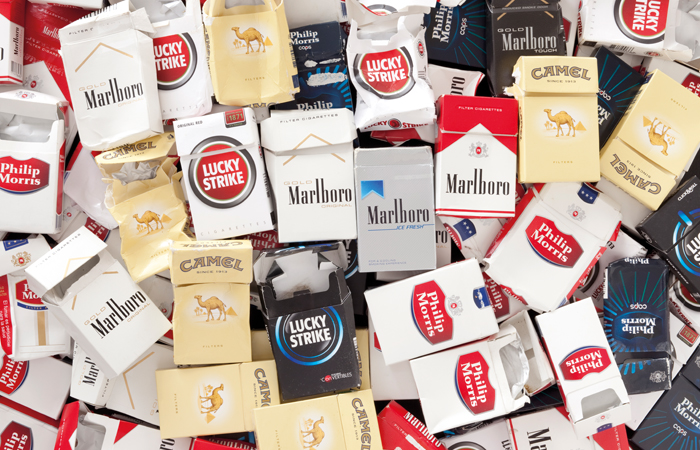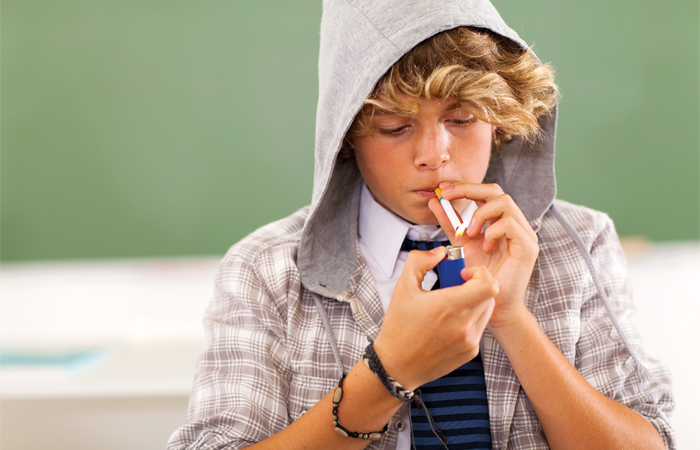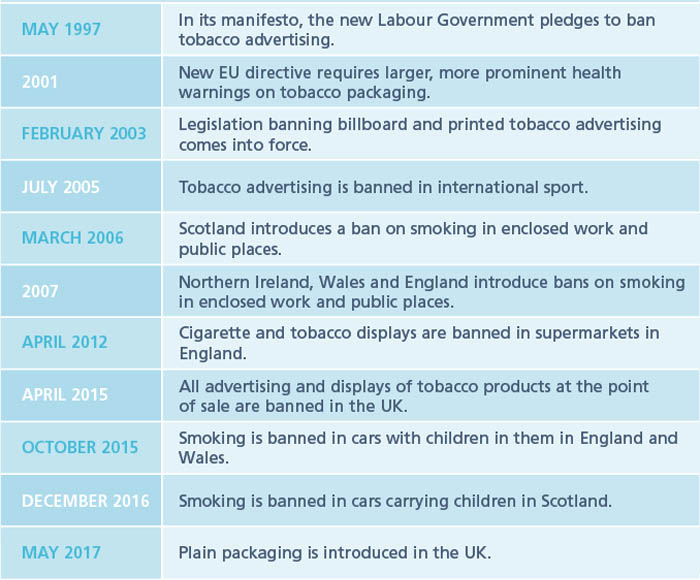Population Health

Plain and simple?
In Population Health
Bookmark
Record learning outcomes
As part of its ongoing attempt to discourage people from smoking, the UK Government has forced tobacco manufacturers to sell cigarettes and tobacco in plain packaging. But what's the potential impact of this latest piece of legislation
On 20 May this year, the UK became the second country in the world and the first in Europe to pass legislation forcing tobacco manufacturers to sell their products in plain, standardised packaging. The move is the latest in a long line of legislation – and one of the biggest, following the now 10-year-old ban on smoking indoors. It’s all part of the Government’s overall aim of discouraging people from smoking and protecting others from the harmful effects of tobacco smoke.

In detail
The latest changes to cigarette packaging and pack sizes include the following:
- Larger health warnings must now be included on packs
- No branding is allowed, other than the product name and size, which must be presented in text of a uniform size
- All designs must be on a dark green background, or Pantone 448c to be exact, which has been voted the least appealing colour
- Packs of 10 cigarettes and smaller packs of tobacco must no longer be sold
- Packs must be cuboid and ‘lipstick’ packs are banned
- A ban on flavoured cigarettes and flavoured rolling tobacco, including menthol cigarettes. The changes to pack sizes and flavoured cigarettes will not come into force until 2020.
Australia was the first country to introduce similar regulations back in December 2012, and a number of charities and healthcare bodies have been campaigning for the UK to follow suit. Why? Well, one reason is the claim that plain packaging reduces the influence of advertising because cigarette packs are more visible than packaging for other products as they are often left out and not thrown away until the pack is finished.
The introduction of plain packaging was the final stage in a decades-long fight to remove tobacco advertising from our society, claims Dr Mike Knapton, British Heart Foundation associate medical director. “We supported this as part of a package to minimise the impact tobacco has on our society,” he says. “It is one of the last measures we have needed to make to remove tobacco advertising from our society. There have been bans on TV and sporting events already, but the packaging is an advertisement in itself that you carry around with you.”
Will it work?
There has already been evidence from Australia that plain packaging has not only been effective in increasing the number of people who are trying to quit smoking (from 20.2 per cent to 26.6 per cent), but that smokers also report the taste of their regular cigarettes has changed, making smoking less pleasurable for them. The overall rate of smoking dropped from 15.1 per cent in 2010 to 12.8 per cent in 2013 – one year after the ban came into effect.
UK-based research from The University of Stirling has also shown that plain packaging reduces the appeal of cigarettes and smoking. This is particularly the case for young women, as many old-style cigarette packs – particularly those for slim cigarettes – have been found to appeal to them.
“Quite a lot of tobacco companies used the packaging to encourage new smokers and they have done that for years,” Dr Knapton explains. “They are now unable to do that, so we think this will have an impact on new smokers. Tobacco companies need to recruit 200,000 new smokers every year as a number of them quit and 100,000 will die as a result of their tobacco smoking.”
There are some detractors, however, who believe that the drop in smoking seen in Australia is merely the continuation of a trend in declining smoking rates that has been seen for the past decade or so. Nevertheless, momentum is growing, with Ireland, France, Sweden, Norway, Hungary, South Africa, Singapore and Canada all considering making the move to plain packaging too.
Reducing rates
There is no doubt that reducing smoking rates in this country will not only improve the nation’s health, but also reduce the burden on the NHS. Smoking rates currently stand at 16.9 per cent (down from 24 per cent in 2007 when the smoking ban started), and the NHS could save as much as £67 million each year if smoking rates decreased to just five per cent of the population, research by Cancer Research UK shows.
The list of diseases caused and exacerbated by smoking is a long one. While respiratory and cardiovascular diseases top the list, smoking can also cause macular degeneration, which can lead to sight loss and worsen the symptoms of autoimmune diseases, which have been on the rise for the past two decades. Clearly, a decrease in smoking rates could have far reaching consequences for many aspects of our wellbeing and the sustainability of our health service.
A smoke-free generation
In recent years, regulation has had a particular emphasis on protecting new smokers, who are most likely to be children.
George Butterworth, Cancer Research UK’s tobacco policy manager, says: “Plain, standardised tobacco packs are designed to protect children from products that we know are deadly – tobacco is unique in that there is no safe level of consumption. For decades, the tobacco industry has got away with promoting their products in slickly designed packaging, which distracts from the true lethal and addictive nature of the contents.”
Some 80 per cent of smokers started as teenagers and healthcare professionals have been campaigning to reduce the harm tobacco causes to children in particular for many years. The Royal College of Physicians, for instance, has campaigned for standardised packaging since 2010 in order to ensure that young people don’t start smoking in the first place. And in 2014, British Medical Association members called for a ban on tobacco sales to people born after 2000 in order to create what it termed a “smoke-free generation”. And the Royal Pharmaceutical Society supported the smoking ban back in 2007, stating that only a complete ban on smoking in all enclosed public areas would “ultimately act as a deterrent to smoking”.
In fact, there have been a number of changes that have specifically targeted children.
For instance, it is now illegal to smoke in cars with children in them, following new laws that were introduced in 2015 in England and Wales and 2016 in Scotland. This move is aimed at protecting the 430,000 children who were previously exposed to tobacco smoke in cars every week, although few prosecutions have been made.
The impact of second-hand smoke on children is significant, with 40 per cent of children with asthma living with a smoker. The risk of sudden infant death syndrome is 2.5-4 times greater for infants exposed to second hand smoke. This knowledge has led to highly targeted smoking cessation services, in an attempt to reduce both the number of women who smoke during pregnancy and the number of adults who smoke while caring for young children.

Two decades of tobacco regulation
Plain packaging and the ban on selling packs of 10 cigarettes is the latest in a long line of moves to reduce the rates of smoking in the UK.
It is now a decade since the smoking ban first took effect in enclosed spaces, and smoking rates have fallen by as much as a third since then in the UK. The ban marked the beginning of a decade-long decline in the rate of smoking, but tax increases have led to major changes in the number of smokers in this country as well, argues Stevie Benton, communications manager at Action on Smoking and Health. “Year on year, the Government puts more tax on. There is a really strong correlation between the level of tax and the rate of smoking,” he explains.
The tax on a packet of 20 cigarettes now accounts for 82 per cent of the total cost, or £6.98 of a recommended retail price of £8.50. It is estimated that the average smoker now spends £2,000 a year on cigarettes, and this figure is rising.
Check out this timeline of key changes to tobacco regulation:

Who is left behind?
While the impact of these collective changes is impressive, not all of society has benefited equally. People at the lower end of the socio-economic spectrum are more likely to smoke, and the NICE guidelines recommend that NHS Stop Smoking services should be targeted at these people.
“It is worth saying that there are many inequalities in how these benefits have been distributed, however. There are still very high rates of smoking among people with mental illness, manual workers and prisoners, and we need to think about how we prevent them from the adverse effects of tobacco,” says Dr Knapton.
